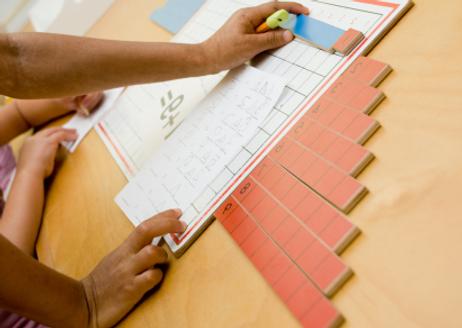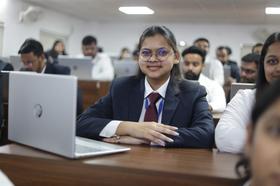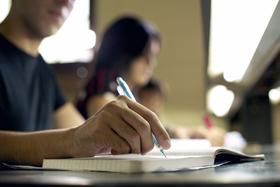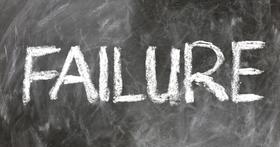Montessori education has been around for more than a century, but many parents and students continue to see Montessori as a mystifying approach to education. Montessori was restricted to private schools for many decades, but recently, the approach has been introduced into some public schools as well – often through charter schools specifically established to allow for Montessori teaching. As the process becomes more widespread in public school venues across the country, a study will be launched to examine the impact of Montessori on public school students. Is Montessori the wave of the future for public schools?
What is Montessori?
Montessori education was first started by Dr. Maria Montessori in 1907, according to the Montessori website. Dr. Montessori discovered through her work with children that young students tend to learn best when they are allowed to teach themselves. Based on that observation, Dr. Montessori designed what she called a “prepared environment” that gave children the chance to choose from many different developmentally appropriate activities. These activities gave children the opportunity to learn at their own pace, using real-life experiences that utilized all five of the human senses.
Dr. Montessori’s first “children’s house” in Rome paved the way for an entire movement in the world of education that has gradually made its way across the globe. Today, Montessori education is found throughout the United States as well in private schools, and more recently, public schools. Even homeschooling parents have found ways to incorporate Montessori principles into their own methods of instruction.
This video describes how a Title I school makes the leap to become a Montessori school.
The Structure of Montessori
A day in Montessori education consists of three-hour work periods, where students are allowed to move from station to station throughout the room at their own pace. Work centers are established, which teach the children all the basic academic subjects through hands-on learning experiences. The only curriculum requirements are those set by federal and state standards – beyond that, students are encouraged to guide their own learning process. Contracts are established with the teachers to guide their requirements, balance their work, and hold them accountable for time management and education.
Instead of being grouped by grade, students are placed into the following age groups: 0-3, 3-6, 6-9, 9-12, 12-15, and 15-18. Classes typically consist of 30-35 students with one teacher and one teacher’s assistant. There are no grades or other types of formal assessments performed by the instructors; instead, students are evaluated based on their accomplishments and behavior. Teachers keep careful records of student performance and observations to assess whether students are learning what they need.
Montessori in Public School Classrooms
For the first few decades after Dr. Montessori established her new teaching methodology, it remained a choice reserved for affluent students who could afford private schooling, although ironically, Dr. Montessori's first Children's House was created specifically for poverty-stricken and working-class children. According to the Community Playthings website, the first public school to embrace Montessori education was Sand Elementary School in Cincinnati, Ohio in 1975. Since that time, Montessori has slowly made its way into other public classrooms, in cities like Denver, Milwaukee, San Francisco, Dallas, Houston, and Seattle.
Hartford, Connecticut opened its first public Montessori school in 1999, the CREC Montessori Magnet School. Capitol Regional Educational Council (CREC) took over the struggling school in hopes of turning it around with a whole new teaching approach. The result has been a thriving Montessori school that now boasts 340 students between the ages of 3 and 12. The director of the school, Denise Gallucci, said this about the school at the Community Playthings website:
“Maria Montessori’s spirit is alive within the children, faculty, staff, and school community at the CREC Montessori Magnet School. The school community embraces the philosophy of educating the whole child, recognizing and celebrating each child’s unique talents and abilities. Public Montessori schools afford all interested families access to this innovative approach to education. The Capitol Region Education Council is honored to offer this school as a learning laboratory for educators all over the world and as an educational opportunity to families within the Greater Hartford region.”
The success of the first Hartford Montessori school prompted the opening of the Montessori Magnet School at Annie Fisher in 2008. The school opened a second program in 2010 and plans to expand its offerings to middle and high school students within the next three to five years. The Superintendent of Hartford Public Schools, Dr. Stephen Adamowski plans to develop a continuum of Montessori schools throughout the district.
This video gives an overview of the multi-age classroom Montessori uses which allows for an everyday setting where younger students are able to learn from their experienced peers.
How Well Does Montessori Work?
Many educators and parents believe that Montessori education offers an alternative academic process that allows children to work at their own, individual pace. This is a philosophy that embraces individuality, allowing children to express themselves and their academic interests at their own speed.
In addition, the numbers thus far have been positive. According to an Association Montessori International (AMI) study, which followed 201 Milwaukee public school students who were taught under the Montessori method from preschool through 5th grade, children taught under Montessori principles "predicts significantly higher mathematics and science standardized test scores in high school."
A report at Education.com, written by Tim Seldin of The Montessori Foundation, states that Montessori education “prepares students for life, not just for admission to college.” However, the lack of homework and structure makes many in the field of education wonder if this really is the best approach to training our children up to be educated, responsible, and competent adults.
To that end, a study has been launched that will weigh the impact of Montessori education on the public school system today. The Riley Institute at Furman has announced on their website that the organization has been awarded a $370,000 grant from the Self Family Foundation of Greenwood to explore how Montessori education might affect student achievement, discipline, progression, and learning outcomes. The study will entail five years of comprehensive research, led by Riley’s research director Brooke Culclasure.
This video offers another look at how Montessori education works.
“Supporters of Montessori education believe the study can provide answers to many of our most pressing educational problems,” Barbara Ervin, Montessori Program Director of Lander University, stated at the Furman website. “To date, only a handful of research studies on Montessori have been completed...[the Furman study] will make a major contribution to our understanding of the Montessori practice.” We sincerely look forward to tracking the Furman study, which will certainly shed more light on this interesting and compelling education practice.
Questions? Contact us on Facebook. @publicschoolreview











